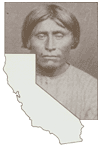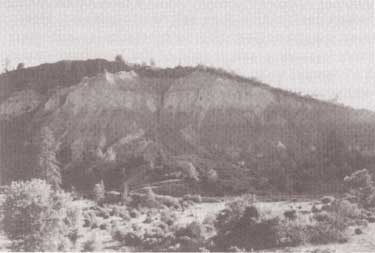![]()

Five Views: An Ethnic Historic Site Survey for California
MENU
Introduction
pre-1769
1769-1848
1849-1879
1880-1904
1905-1933
1934-1964
1965-1980
Historic Sites
Selected References

A History of American Indians in California:
HISTORIC SITES
Cherokee
Butte County
Cherokee is a historic California gold mining town, constructed in response to the gold discoveries of 1853. It was named after a group of Cherokee Indians who prospected in the area. The town is located 10 miles north of Oroville and two miles west of the Feather River in Butte County. Cherokee was one of the most common names given to mining towns during the California Gold Rush era. This town received its name from a band of Cherokee Indians who came to the state in 1853 with S. O. Potter, a Maine schoolmaster, who had been teaching in Indian territory. Because Cherokee's gold deposits were so rich, news of them spread throughout the territory, and a great many Whites began to come into the town to reap the harvest that had previously benefitted its original occupants.
Cherokee began to prosper as a gold mining town in 1853 when water was brought in from Bloody Run and Grizzly Canyon via Grizzly Ditch. From 1853 to 1861, some companies made 50 dollars a day. During the boom period, the Spring Valley Hydraulic Gold Company owned the town's mining operations which were then described as a magnificent consolidation of many claims, the most successful hydraulic mining operation in Butte County, and among the finest in the world. A post office was established in 1854, followed by the construction of a Welsh Congregational Church in 1857. By 1861, The Mining Press, Cherokee's local newspaper, called the town almost dead; however, as late as 1867, it was still termed a sizeable town. Today, the site of Cherokee is marked by remnants of extensive dredge, placer, and pick-and-shovel mining. The Cherokee Indians who originally mined the area moved on after the gold deposits were exhausted; today, it is difficult to trace the movement of its first Indian inhabitants.

Cherokee
NEXT> Cupa
Last Modified: Wed, Nov 17 2004 10:00:00 pm PDT
5views/5views1h14.htm
 Top
Top